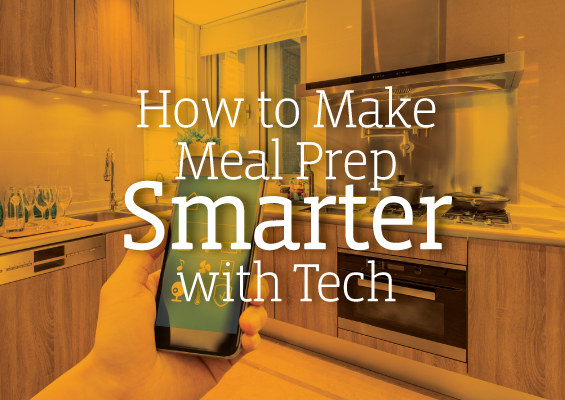 Whether you love or hate to cook, smart appliances and other Internet of Things (IoT) devices can dramatically simplify your life and boost the efficiency of preparing and serving a holiday feast or a weeknight dinner. If you need a hand with meal prep, check out these Wi-Fi appliances and other tools to make your kitchen smarter and to make you a more efficient chef.
Whether you love or hate to cook, smart appliances and other Internet of Things (IoT) devices can dramatically simplify your life and boost the efficiency of preparing and serving a holiday feast or a weeknight dinner. If you need a hand with meal prep, check out these Wi-Fi appliances and other tools to make your kitchen smarter and to make you a more efficient chef.
- Smart Fridges: These are on every tech-savvy chef’s wish list. Smart refrigerators, such as the Family Hub Touchscreen Fridge from Samsung, are loaded with a touchscreen that displays things like your calendar and grocery lists and has internal cameras so you can monitor what’s in your fridge from anywhere and stock up as needed. Need some music while you’re cooking? Smart fridges also play your favorite songs with a few taps of the screen.
- WeMo-compatible Slow Cookers: Slow cookers have a long history of making life easier in the kitchen, and Crock-Pot’s WeMo-compatible models take it one step further. They allow you to adjust the temperature, turn the heat off or switch to warm mode from your smartphone’s WeMo app, wherever you are.
- Hi-tech Scales: Who needs measuring cups when a smart scale can get the ratio right for you right in the bowl? Smart scales like the Drop Scale make baking the perfect desserts a cinch. They’ll even help you make sure you’re getting the ratios precise on mixed drinks.
- Smart Ovens: These ovens are a great investment if you want to be able to remotely adjust the temperature of your oven and preheat it from your smartphone. Smart toaster ovens are also a great and relatively affordable option if you want more high-tech control over cook times and temperature settings. This toaster oven from Breville even reduces cooking time by 30%.
- Smartphone-friendly Thermometers: You can leave thermometers like Range in your turkey, chicken or roast while it cooks and get updates on your smartphone about the internal temperature of the meat. They’re quite handy if you’re worried about over- or undercooking.
- Sous Vide Cooking Devices: A favorite of pro chefs, these sous vide devices are making their way to technologically advanced kitchens everywhere. They allow you to achieve restaurant-quality temperature control of dishes you cook in hot water using vacuum-sealed bags. They can also be controlled and monitored remotely.
- Voice-controlled Speakers: If you’re already using voice-controlled speakers like the Amazon Echo or Google Home, you can take advantage of the many kitchen-centered apps and skills they offer. These devices can pull up recipes, make shopping lists you dictate, set multiple timers and convert measurements, among other things.

As with all IoT devices, security is a primary concern. The tech industry is still sorting out how to make them 100% secure and not vulnerable to hacks. If recent news reports of the susceptibility of smart ovens to hacking have you worried, make sure you follow manufacturer’s recommendations and consistently download updates to apps.
You can also segment your home network so that your IoT devices are separate from more complex things like your computer, smartphone, tablets and gaming systems. Companies are consistently working to make IoT devices safer, but it’s always best to take any recommended precautions.
The trending kitchen tools listed above are just the beginning of what you can use to make meal prep smarter, more efficient and, hopefully, more enjoyable. This time next year, expect to see even more intelligent and intuitive options to meet your needs as a chef and host.
The new update to CompTIA Security+ covers IoT devices. Download the exam objectives today.
